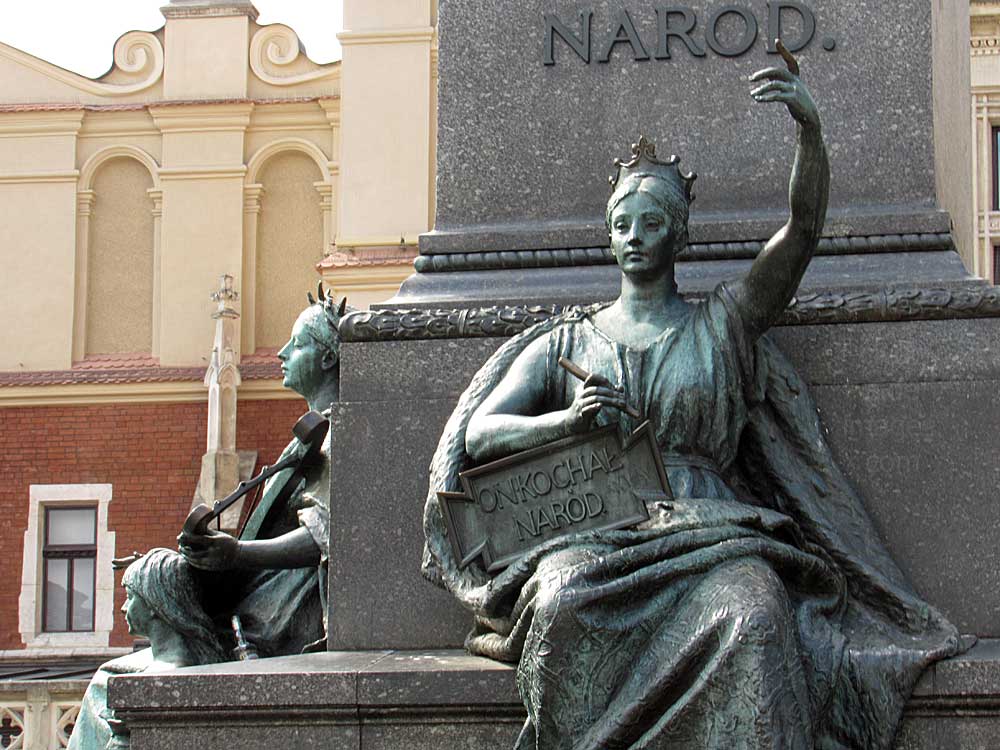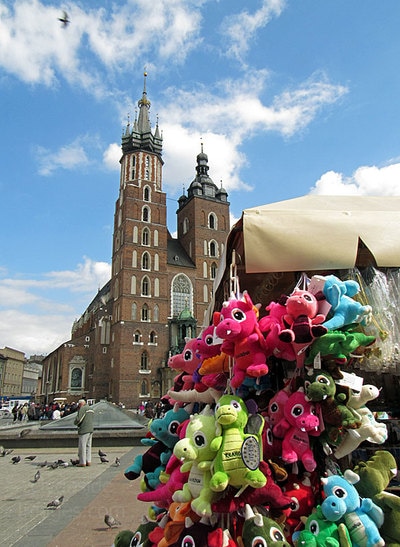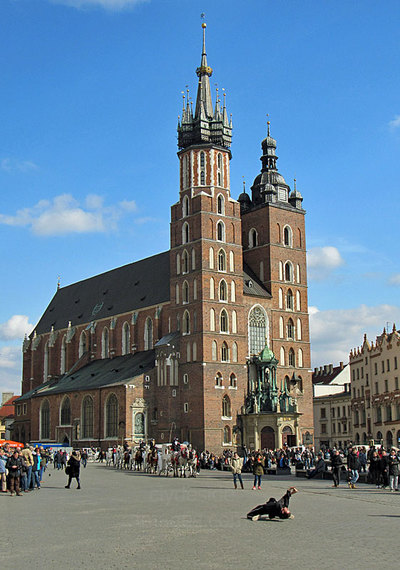Krakow
The Market Square
Krakow`s main square, Rynek Główny, measures 200m x 200m which makes it the largest medieval town square in Europe. The plans, which are supposedly based on the layout of a Roman military camp, were drawn up in 1257 and the square has retained the same design to this day, albeit the buildings have changed over the centuries. Located on the route once traversed by Royal parties attending Coronations at Wawel Cathedral, the square has long been considered the centre of the city.
Most of the brick buildings, churches and palaces overlooking the square have acquired a neoclassical look over time, but the basic structures are much older and many require extra support from external sloping buttresses. Architectural details and interiors also hint at a building`s original era. The square is lined with restaurants and cafes and some of the vast medieval cellars are used as pubs and clubs. One even doubles as a small theatre.
Among the square's landmarks is the Cloth Hall, which was originally designed in the 14th century as a centre for cloth trade. It was gutted by fire in 1555 and rebuilt in the Renaissance style by Giovani il Mosca from Padua in Northern Italy. The arcades which contain souvenir shops and cafés were added in the 19th century. The Gallery of the National Museum is housed upstairs. Other noteworthy structures are the Town Hall Tower (the town hall itself hasn`t survived), St. Mary's Basilica, a brick Gothic church built in the 14th century on the ruins of an earlier church, and the Church of St. Adalbert.
A monument to Adam Mickiewicz (24 December 1798 – 26 November 1855) stands in a prominent position in the square. Mickiewicz, a political activist, is also widely regarded as Poland`s greatest poet. He died, probably of cholera, at Constantinople in the Ottoman Empire, where he had gone to help organise Polish and Jewish forces to fight Russia in the Crimean War. In 1890, his remains were repatriated from Val-d'Oise, in France, to Krakow`s Wawel Cathedral.
The Tower is the only remaining part of the old Kraków Town Hall which was demolished in 1820 as part of the city plan to open up the Square. Its cellars once housed a city prison, which included a torture chamber in Medieval times. The Gothic structure dates from the late 13th century and stands 70 metres tall. Due to a severe storm in 1703, it has developed a slight lean of just 55 centimetres - not exactly a rival for the Leaning Tower of Pisa! There is an observation deck at the top which is open to visitors and offers views across the city including a fine panorama of Wawel Castle. The entrance to Krakow`s Town Hall Tower is guarded by a pair of stone lions which were carved at the beginning of the 19th century.
Also included in this page are the streets surrounding the square, some of which contain well-preserved or renovated historical buildings and lead through the Old Town to Wawel Castle, while others are home to a variety of eateries and both modern and traditional shops. The above view was taken from the Town Hall Tower.




































